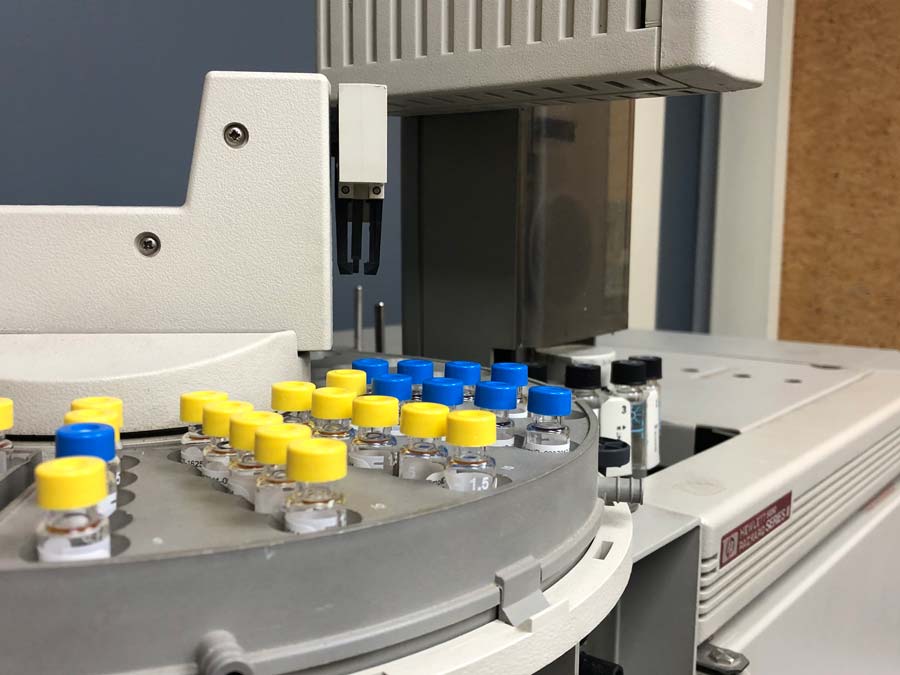What Are Cyclomethicones?
Lately, cyclomethicones have been getting a lot of attention as we make further discoveries regarding their practical and scientific uses. Due to the recent research levels given to them, more and more products are utilizing these compounds. It is essential that they are being used responsibly and correctly due to the concern that some of these compounds may be endocrine disruptors. Continue reading to learn about cyclomethicones, their different types, and their various uses.
Cyclomethicone is a term assigned to various cyclic siloxane materials. They have a variety of uses in consumer products. For example, D5 and D6 appear in multiple cosmetological products. These are such valuable cyclomethicones because of their evaporative properties.
Each cyclomethicone has the same structural outline: a cyclic backbone comprised of siloxane units, such as silicon and oxygen, which have attached hydrogen and carbon molecules.
Cyclosiloxanes are known for being volatile, frequently working as a solvent. Like other siloxanes, they are known for their tendency to evaporate. Cyclomethicones can further divide into three widespread variations within commercial enterprises. Certain cyclosiloxane compounds retain their volatility with little to no adverse consequences. This phenomenon appears in compounds such as dodecamethylcyclohexasiloxanes and decamethylcyclopentasiloxanes. However, there are other compounds, such as octamethylcyclotetrasiloxane, whose volatility has proven to be beyond the boundaries of safe practices regarding specific manufacturing applications.
Most Popularly Used Cyclomethicone Compounds
Octamethylcyclotetrasiloxane
Octamethylcyclotetrasiloxane is an organosilicon compound abbreviated as D4. Its chemical formula is [(CH3)2SiO]4. Physically, it is a clear liquid. It shows up frequently in a variety of different capacities.
However, due to its potentially volatile nature, it has been heavily regulated in countries like the EU. However, it is usually only used in the early stages of production, and very little of the substance remains in the finished product.
Decamethylcyclopentasiloxane
Like D4 and D6, Decamethylcyclopentasiloxane (D5) is cyclical and odorless. It has five silicon and five oxygen atoms that repeat in a pattern. Due to its spreading properties, it is an active ingredient in items such as lotions and makeup.
Dodecamethylcyclohexasiloxane
Otherwise known as D6, this siloxane has no odor when in liquid form. Silicon and oxygen atoms comprise the compound. This repeating arrangement gives the molecule a circular look. There are six oxygen and six silicon atoms; each silicon atom has two additional methyl groups attached.
What is the Difference Between Linear and Cyclical Siloxanes?
All cyclosiloxanes are cyclical, as evidenced by their name. This trait makes them particularly effective in products that require a degree of evaporation, like deodorants, cosmetics, and even some hair conditioners. However, linear cyclosiloxanes are frequently known as dimethicones. These are also methyl-based siloxanes, but they do not evaporate.
Why is Knowing this Information Important?
Scientists must consider these different compounds’ capabilities when used in production capabilities. For example, dodecamethylcyclohexasiloxane and decamethylcyclopentasiloxane are natural evaporators, making them particularly effective for applications in cosmetics such as deodorants. Deodorants need application, but after the initial application, a degree of evaporation needs to occur, or it would leave an uncomfortable sticky feeling at the application site.
Test Your Cyclomethicone-Based Products with Ace Laboratories
Due to their various chemical compounds and innate properties, cyclomethanes have great potential. However, as with all new technologies, it has the potential for harm and good. The adverse effects are often simply oversights due to a need for more understanding. The best way to avoid this is to ensure you know your product inside and out. Ensure you use these compounds responsibly by having them tested by ACE Laboratories. Reach out today!

